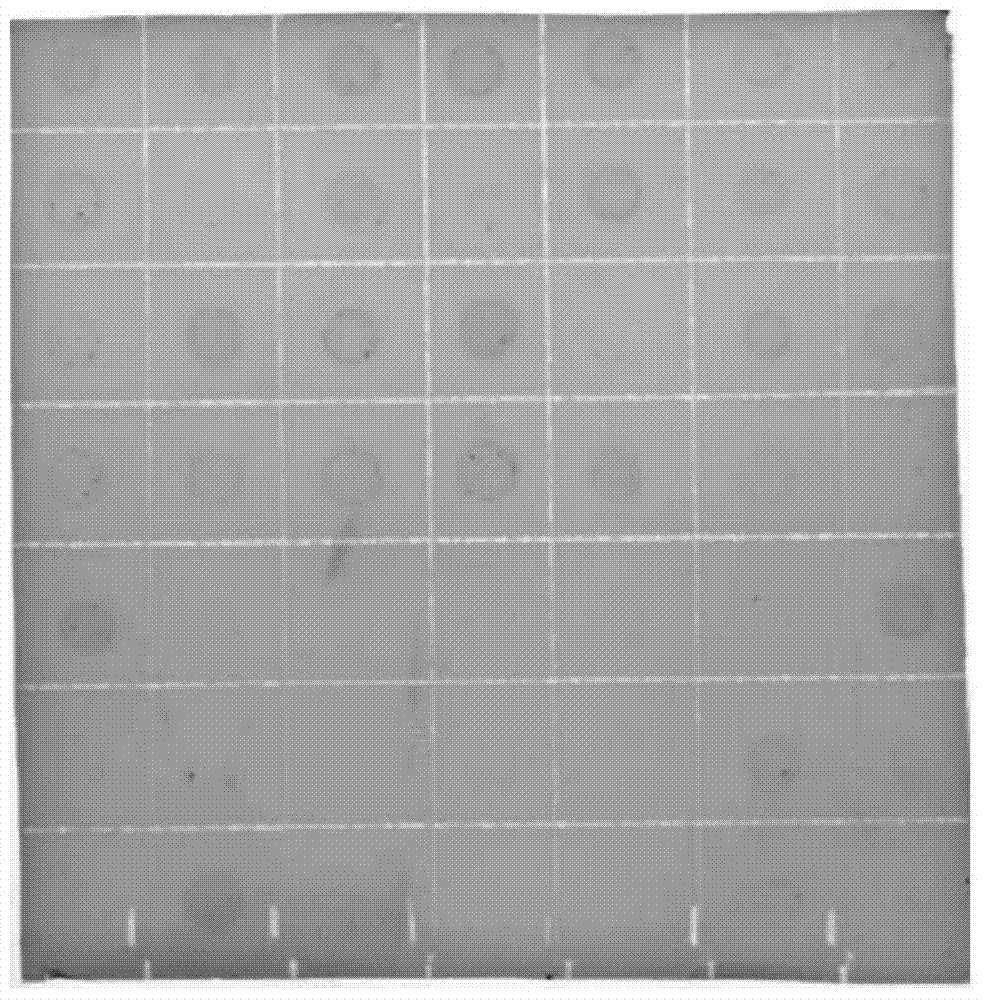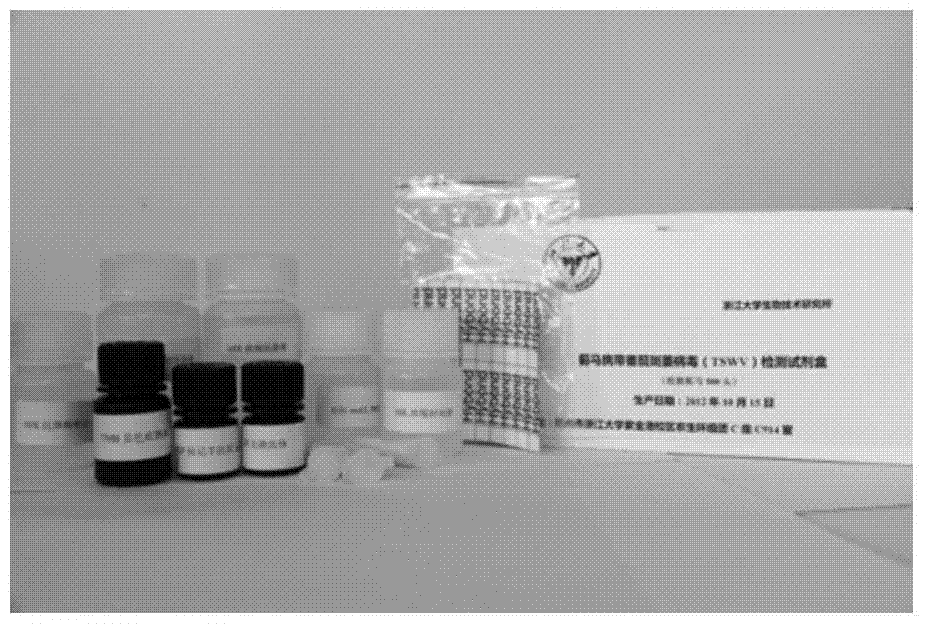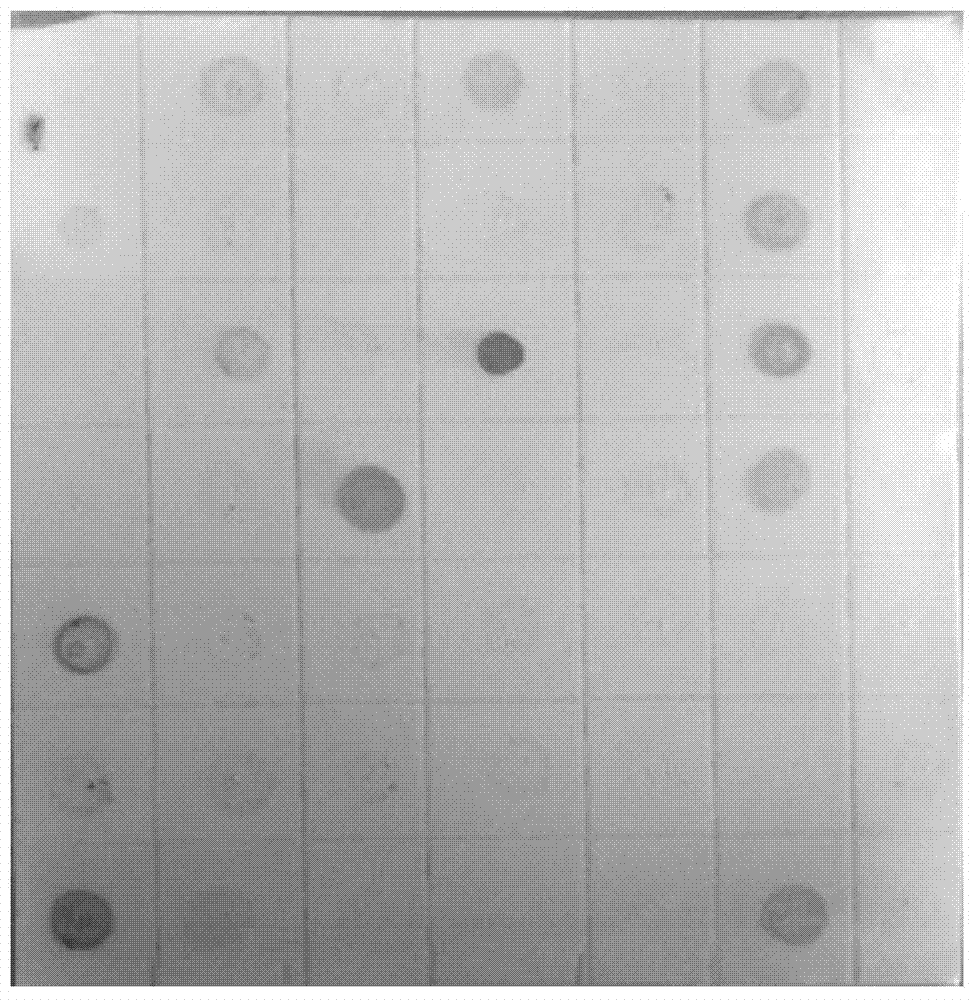Serological method for rapid detection of tomato spotted wilt virus carried by individual thrips and its application
A tomato spotted wilt virus and serological technology, applied in the field of rapid detection of thrips, can solve the problems of no reports and achieve the effect of simple operation, high accuracy and low cost
- Summary
- Abstract
- Description
- Claims
- Application Information
AI Technical Summary
Problems solved by technology
Method used
Image
Examples
Embodiment 1
[0089] Embodiment 1: detection of thrips sample poisoning rate
[0090] Collect 160 thrips reared in the laboratory, dip a single thrips with a brush, place them on a clean parafilm, add 2 ul of 0.05 mol / L PBS dropwise to each head, and grind them with the bottom of a 0.5 ml centrifuge tube. Use a pipette gun to draw 1-2 μL of thrips homogenate, spot on the center of the nitrocellulose membrane, and set positive and negative controls. Let the membrane stand to dry, add about 10 ml of 5% skim milk powder, and block at 37°C for 30 minutes; discard the skim milk powder, add 1:3000 times diluted monoclonal antibody against tomato spotted wilt virus, and incubate at 37°C for 1 hour ; Discard the liquid, shake and elute with PBST (0.01 mol / L PBS containing 0.05% Tween-20) 3 times, 3 minutes each time; discard the eluate, add 1:2000 diluted horseradish peroxidase (HRP )-labeled secondary antibody (A4416 Sigma), and incubated at 37°C for 1 hour; discard the liquid, shake and elute wi...
Embodiment 2
[0091] Example 2: Development of a dot-ELISA kit for detection of tomato spotted wilt virus carried by thrips
[0092] 1. Detection of thrips carrying tomato spotted wilt virus (TSWV) dot-ELISA kit ( figure 2 ) contains the following materials and reagents:
[0093] 1) Kit instruction manual 1 copy
[0094] 2) Reagents and materials:
[0095] 0.05 mol / L PBS 10ml
[0096] TSWV monoclonal antibody 0.1 ml
[0097] Positive control (poisonous thrips homogenate) 0.1 ml
[0098] Negative control (non-toxic thrips homogenate) 0.1 ml
[0099] HRP-labeled goat anti-mouse secondary antibody 0.1 ml
[0100] TMB chromogenic substrate solution 10 ml
[0101] 10× Concentrated Blocking Solution 10 ml
[0102] 10× Concentrated Antibody Diluent 20 ml
[0103]20× Concentrated Wash Solution 60 ml
[0104] Sealant 15 g
[0105] NC film 5 pieces
[0106] 2. The kit instruction manual includes:
[0107] 2.1 Principle of the kit:
[0108] dot-ELISA is an ELISA detection method based o...
Embodiment 3
[0132] Example 3: Using a kit to detect the rate of thrips in the field
[0133] The kit can be used to detect the virus-carrying rate of thrips samples in the field, and hundreds of thrips can be detected at the same time. The results are fast, reliable, high-throughput and easy to operate, which provides technical support for early prediction of the occurrence and prevalence of the disease. image 3 It is part of the results of using the kit to detect Thrips yunnanensis. The test results showed that 26 of the 258 thrips were positive ( image 3 ), the calculated rate of thrips to TSWV is 10.08%, and it is predicted that there will be an epidemic trend of TSWV in this area. It is recommended to control thrips with pesticides to prevent the prevalence and outbreak of TSWV.
PUM
 Login to View More
Login to View More Abstract
Description
Claims
Application Information
 Login to View More
Login to View More - R&D
- Intellectual Property
- Life Sciences
- Materials
- Tech Scout
- Unparalleled Data Quality
- Higher Quality Content
- 60% Fewer Hallucinations
Browse by: Latest US Patents, China's latest patents, Technical Efficacy Thesaurus, Application Domain, Technology Topic, Popular Technical Reports.
© 2025 PatSnap. All rights reserved.Legal|Privacy policy|Modern Slavery Act Transparency Statement|Sitemap|About US| Contact US: help@patsnap.com



